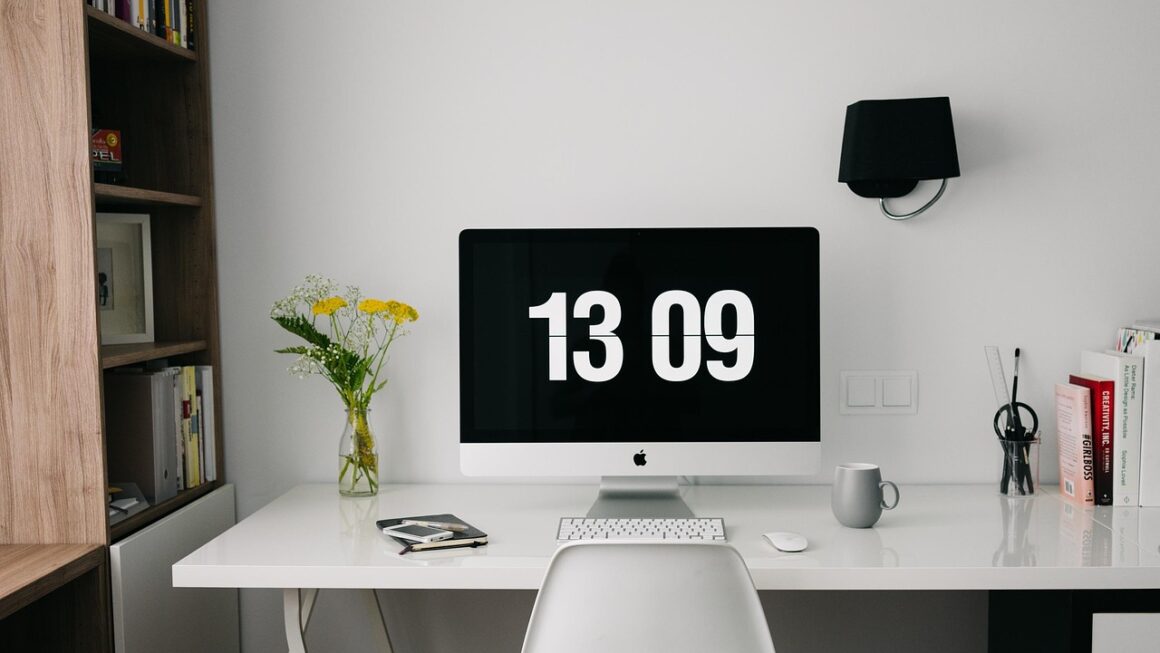Achieving a fulfilling life isn’t just about career success; it’s about finding harmony between your professional ambitions and your personal well-being. The concept of work-life balance has evolved from a desirable perk to a necessity for sustained productivity and overall happiness. In this comprehensive guide, we’ll explore practical strategies to help you navigate the demands of modern life and create a schedule that nourishes both your career and your personal life.
Understanding Work-Life Balance
What Does Work-Life Balance Really Mean?
Work-life balance isn’t about perfectly splitting your time 50/50 between work and personal life. It’s about achieving a sense of equilibrium where you feel content and fulfilled in various aspects of your life, including your career, relationships, hobbies, and personal well-being. It’s a highly personal and dynamic concept, constantly shifting based on your current priorities and circumstances. For example, a new parent might prioritize family time over work commitments, while someone launching a business might temporarily lean more towards their career.
The Benefits of a Healthy Balance
Striving for and achieving a healthy work-life balance offers a multitude of advantages:
- Reduced Stress and Burnout: By carving out time for relaxation and personal activities, you can significantly lower your stress levels and prevent burnout.
- Improved Physical and Mental Health: A balanced lifestyle promotes better sleep, healthier eating habits, and increased physical activity, all of which contribute to improved overall health.
- Enhanced Productivity and Creativity: Taking breaks and engaging in enjoyable activities can refresh your mind, leading to increased focus, creativity, and productivity at work.
- Stronger Relationships: Dedicating quality time to loved ones strengthens relationships and fosters a sense of belonging.
- Increased Job Satisfaction: Feeling in control of your time and energy contributes to a greater sense of job satisfaction and loyalty.
- Better Decision-Making: When you’re not constantly stressed and overworked, you’re able to make clearer, more rational decisions.
Setting Priorities and Boundaries
Identifying Your Priorities
The first step towards achieving work-life balance is identifying your priorities. What truly matters to you? What activities bring you joy and fulfillment? Consider creating a list of your values and priorities, both personal and professional. For instance:
- Career: Advancement, learning new skills, financial stability.
- Family: Spending quality time with children, attending family events, supporting loved ones.
- Health: Exercise, healthy eating, mental well-being.
- Personal Growth: Learning new hobbies, pursuing passions, self-improvement.
- Relationships: Maintaining friendships, nurturing romantic relationships, connecting with community.
Once you’ve identified your priorities, you can make conscious decisions about how to allocate your time and energy.
Establishing Clear Boundaries
Setting boundaries is crucial for protecting your personal time and preventing work from encroaching on your life outside of office hours.
- Set Work Hours: Define your working hours and stick to them as much as possible. Communicate your availability to colleagues and clients.
- Disconnect from Work: Avoid checking emails or working on projects outside of your designated work hours. Turn off notifications and create a dedicated workspace that you can physically leave at the end of the day.
- Learn to Say No: Don’t be afraid to decline requests that would overload your schedule or compromise your personal time. Prioritize tasks and delegate when possible.
- Communicate Your Needs: Let your manager and colleagues know your boundaries and expectations. Be transparent about your need for work-life balance.
For example, tell your team that you will not be checking emails after 7 PM, and encourage them to respect that boundary unless it’s a true emergency.
Time Management Strategies
Effective Scheduling and Planning
Effective time management is essential for optimizing your time and creating a schedule that supports your work-life balance.
- Use a Planner or Calendar: Schedule all your appointments, meetings, and tasks, both work-related and personal. Block out time for exercise, hobbies, and relaxation.
- Prioritize Tasks: Use techniques like the Eisenhower Matrix (urgent/important) or the Pareto Principle (80/20 rule) to identify and prioritize the most important tasks.
- Break Down Large Tasks: Divide large, overwhelming tasks into smaller, more manageable steps. This makes them less daunting and easier to accomplish.
- Time Blocking: Allocate specific blocks of time for different activities. For example, dedicate one hour each day to answering emails or two hours each week to working on a personal project.
- Batch Similar Tasks: Group similar tasks together to minimize context switching and improve efficiency. For instance, answer all your phone calls at once, or write all your social media posts in one sitting.
Minimizing Distractions and Maximizing Focus
In today’s fast-paced world, distractions are everywhere. Minimizing distractions is crucial for improving focus and productivity.
- Identify Your Distractions: What are the biggest distractions that prevent you from focusing on your work? Common culprits include social media, email notifications, and noisy environments.
- Create a Distraction-Free Workspace: Find a quiet place where you can work without interruptions. Consider using noise-canceling headphones or a website blocker to minimize distractions.
- Turn Off Notifications: Disable notifications for social media, email, and other apps that constantly vie for your attention.
- Use the Pomodoro Technique: Work in focused bursts of 25 minutes, followed by a short 5-minute break. After four “pomodoros,” take a longer break of 20-30 minutes.
- Practice Mindfulness: Cultivate mindfulness by paying attention to the present moment without judgment. This can help you stay focused and reduce stress.
Self-Care and Well-being
Prioritizing Physical Health
Taking care of your physical health is essential for maintaining energy levels, reducing stress, and improving overall well-being.
- Regular Exercise: Aim for at least 30 minutes of moderate-intensity exercise most days of the week. Find an activity you enjoy, such as running, swimming, cycling, or yoga.
- Healthy Eating Habits: Nourish your body with a balanced diet rich in fruits, vegetables, whole grains, and lean protein. Limit processed foods, sugary drinks, and excessive caffeine.
- Adequate Sleep: Aim for 7-8 hours of quality sleep each night. Establish a regular sleep schedule and create a relaxing bedtime routine.
- Hydration: Drink plenty of water throughout the day to stay hydrated and energized.
Nurturing Mental and Emotional Health
Mental and emotional well-being are just as important as physical health. Make time for activities that help you relax, de-stress, and recharge.
- Practice Relaxation Techniques: Try meditation, deep breathing exercises, or yoga to calm your mind and reduce stress.
- Engage in Hobbies: Pursue activities that bring you joy and fulfillment. This could include reading, painting, gardening, or playing a musical instrument.
- Spend Time in Nature: Research has shown that spending time in nature can reduce stress, improve mood, and boost creativity.
- Connect with Loved Ones: Spend quality time with family and friends. Social connections are essential for emotional well-being.
- Seek Professional Help: If you’re struggling with stress, anxiety, or depression, don’t hesitate to seek professional help from a therapist or counselor.
Leveraging Technology and Automation
Utilizing Technology for Efficiency
Technology can be a powerful tool for improving efficiency and streamlining tasks.
- Project Management Software: Use tools like Asana, Trello, or Monday.com to organize your tasks, track progress, and collaborate with team members.
- Automation Tools: Automate repetitive tasks using tools like Zapier or IFTTT. This can save you time and effort.
- Calendar Apps: Use calendar apps to schedule appointments, set reminders, and manage your time effectively. Google Calendar and Outlook Calendar are excellent choices.
- Communication Tools: Use communication tools like Slack or Microsoft Teams to stay connected with colleagues and clients.
Automating Mundane Tasks
Identifying and automating mundane tasks can free up valuable time and energy.
- Email Filtering: Set up email filters to automatically sort and prioritize incoming emails.
- Bill Payment Automation: Automate bill payments to avoid late fees and save time.
- Social Media Scheduling: Use social media scheduling tools like Hootsuite or Buffer to schedule posts in advance.
- Task Management Automation: Use task management apps to automate recurring tasks and set reminders.
By strategically leveraging technology and automation, you can significantly improve your efficiency and free up more time for personal pursuits.
Conclusion
Achieving work-life balance is an ongoing journey, not a destination. It requires conscious effort, consistent evaluation, and a willingness to adapt to changing circumstances. By understanding your priorities, setting boundaries, managing your time effectively, prioritizing self-care, and leveraging technology, you can create a fulfilling and balanced life that supports both your career aspirations and your personal well-being. Start small, be patient with yourself, and celebrate your progress along the way. The rewards of a healthy work-life balance – reduced stress, improved health, stronger relationships, and increased job satisfaction – are well worth the effort.




